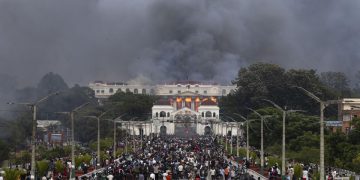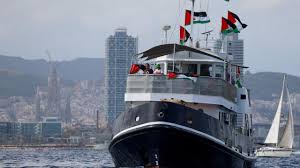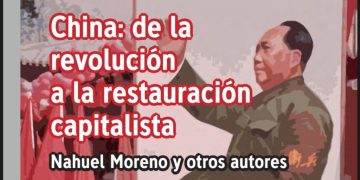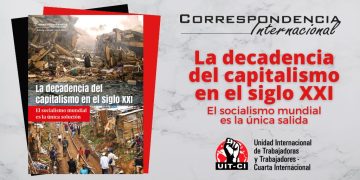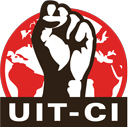The current European crisis confirms the severity and acuteness of the global capitalist crisis. The various adjustment measures, national, regional or global (such as meetings of the European Union countries and the G-20), cannot overcome the acute crisis opened in July 2007. Moreover, they do not even prevent any further «episodes» of greater intensification.
We are witnessing, especially since 2009 when the crisis finally settled in Europe, the failure of the euro as currency and the European Union (EU) itself. The euro, launched in 2000 as a strong regional currency, with aspirations to dispute the dollar the title of world currency, is definitely failing.
The euro crisis is the first emerging sign of something more general: the own European Union project. The bodies established in 1992 had set limits to fiscal deficits and debt to be met by all countries for EU membership. The reality is that today absolutely none meets it. The EU has been reduced to a tool for the semi-colonization of the continent’s weaker nations (all former Eastern Europe, plus Portugal and Greece) by Germany and very secondarily, by France. The bailout of the banks in the second half of 2007, throwing billions of dollars into the market, finished with almost all States in the region in debt to unsustainable levels and the German and French banks as major creditors.
Greece is, without doubt, the weakest link in the chain, as it presents the worst numbers in economic terms, the highest rise in terms of class struggle and the biggest political crisis of the entire region.
But the crisis is global in Europe. Already there are ten countries in recession in the EU: Netherlands, Spain, Czech Republic, Greece, Italy, Cyprus, Hungary, Portugal, Finland and Luxembourg. The EU accounts for 26 million unemployed in 2013, a rise of 1.8 million over the previous year. In Greece, 60% of young people are out of work. Spain is also experiencing one of the worst situations with unemployment of 26.4%, with 6 million unemployed (data Clarin, Argentina, 03/04/13).
The crisis hit Cyprus, which was until now one of Europe’s tax havens. It is a small country of 1,120,000 inhabitants. But the outbreak of the crisis is part of the Eurozone crisis and may have serious consequences. The government imposed a «corralito» (the economic measures taken in Argentina at the end of 2001 which almost completely froze bank accounts, NT) and the «troika» (IMF, European Central Bank, Germany-France) wants to impose a violent robbery to bank deposits and a strong social cut, to collect the debt.
Even the most «solid and stable» country of the European Union, Germany, is settling its growth to strengthen its imperialist role in the region, but it is also keeping its own workforce at very low wages (millions of Germans earn just over one thousand euros per month), its economy then utterly dependent on exports.
It is a global crisis
But it is not merely a European crisis or of the «old powers», as some analysts argue, adding the United States and Japan. This is a crisis and meltdown of the capitalist-imperialist system as a whole. It is spreading across the globe with different expressions and rhythms. In fact, 2008 was the first since the end of World War II when there was a drop of global GDP.
The severity of the crisis is shown because it began in the United States (a country that has not yet moved forward, as it maintains an unemployment rate of almost 10%) and moved quickly to Europe. But, as we develop in the respective chapter, the crisis has entered China. We must point out here the situation of the so-called BRIC (Big Recently Industrialized Countries), the acronym referred to Brazil, Russia, India and China. We insist on defining them as semi-colonial, although because of their size and regional importance they can sometimes play the role of sub-metropolis or sub-imperialist. In no case, any of these countries separately nor all together, are able to become a new «locomotive» to relaunch the global economy and lift it out of the crisis.
Extreme social polarization
The capitalist crisis produces destruction of wealth and increased poverty, but also winners. Many capitalists lose, some capitalists go bankrupt, but others become immensely richer and the poor are always the ones who pay: the result is an extreme social polarization. This is what indicates the slogan of young Americans of «Occupy Wall Street», «we are the 99%» showing that there is a 1% of beneficiaries.
This slogan reflects reality. There is at least statistically 1% who benefited. In a January 2013 report, the NGO Intermon-Oxfam notes that «The 1% of the world’s richest people have increased their income by 60% in the last 20 years and the financial crisis has only accelerated this trend.»
At the other end, according to the United Nations Development Program (UNDP), there are three billion people in poverty living on less than two dollars per day. Meanwhile, 20% of the richest population owns 74% of the world’s income and the poorest 20% has only 2% of income. Nearly 925 million people go hungry, according to 2011 data from the UN Food and Agriculture Organization (FAO). 1.3 billion lack adequate access to drinkable water. We can go a little further and see that these data differ by region. In Africa, for example, 66% of the population lives on less than a dollar a day.
«The US$ 240 billion of net income of the 100 richest people in the world would be enough to finish four times with extreme poverty, according to the report ‘The cost of inequality: how extremes wealth and income hurt us all.’ Put another way, if these 100 super-rich donated a quarter of their income, they would end extreme poverty in the world. Of course this philanthropic donation, although any of them individually could possibly do it, is totally out of the logic of capitalism. The Oxfam report calls on world leaders to contain extreme income and commit to reducing inequality; at least up to the levels existing in 1990.» That is, relative to the inequality, for Oxfam to return to 1990 levels would be a great step forward!
An indication of the wealth of billionaires is the massive build-up in tax havens. «Ending tax havens, home to about US$ 32 trillion (one-third of global wealth!), could generate an additional US$ 189 billion in tax revenue,» says Oxfam.
Another expression of this extreme social polarization is the purchase of land by imperialist and sub-imperialist states or their transnationals in poor countries.
In the report ‘Transnational Land Deals for Agriculture in the Global South’, released last year by the consortium of European research institutes and NGOs Land Matrix Partnership, shows that since 2000, investors or State agencies of rich and emerging countries have bought more than 83 million hectares of farmland in the poorest developing countries. This represents 1.7 % of global cropland.
The investments are private and public (e.g., by state-owned entities) and come from three different groups of countries: emerging economies like China, India, Brazil, South Africa, Malaysia and South Korea, the oil-rich Gulf States; and rich developed economies like the United States and several European countries.
The majority of investments are destined to the production of food or other crops for export from the countries where land is purchased, for the obvious reason that richer countries can pay more for production. More than 40 % of these projects aim to export food. That is, land that formerly produced food by small farmers, who destined it to feed themselves or to sell in the domestic market are now destined to export crops, giving income to multinationals and removing the bread from a large part of the poor population.
A chronic crisis
It is a historical crisis of the world capitalist system. This is not just another crisis. It is an acute phase of the crisis of the capitalist economy which, since the 1960s, has become chronic crisis. We argue since then that the origin of the crisis is in the falling rate of profit of the most important industries in the world economy, which generated an immense over-accumulation of capital seeking speculative bubbles generating fictitious valuations that, after giving a false sense of «prosperity», burst in the short-term, resulting in «acute» phases in this crisis.
Thus, we list as chapters of this crisis the collapse of the U.S. auto industry in the late 1960s, the two oil crises of the 1970s, the crisis of the Latin American foreign debt in 1982, the fall of Wall Street in1987 and the Japanese stock market in 1989, and the crises of the 1990s (Mexico in 1994, Southeast Asia in 1997, Russia in 1998), completed with the Latin American crisis of the century, with its epicentre in Argentina in 2001, while the crisis of the technology companies in the United States was also developing. The current one, which has already been on for five years, is a chapter of this chronic crisis, undoubtedly the most acute and comparable only in the history of capitalism to the crisis of 1929.
On the causes of capitalist crisis, there are different interpretations among economists and the world left. Some speak of a clash of financial (speculation, bank and bourse failures) and productive capital. Others, of a crisis of overproduction. Undoubtedly, these phenomena exist in the crisis, but they are expressions of it and not the causes. Without denying these different manifestations of the crisis, the root cause, we believe, is the falling rate of profit and the attempt to overcome it by making a new mass of surplus value (higher degrees of super-exploitation of workers).
There comes a point at which the rate of profit falls because capitalists cannot impose the exploitation levels they need. Over accumulation of capital stalls and, therefore, investment in production is not profitable for the capitalists. By not investing in production, new branches of production do not expand, the equipment ages; companies close and there are job cuts. That’s why in the last 40 years unemployment increases without stopping, even in developed countries. This produces a massive withdrawal of capital looking to make profits in the financial roulette. The growth of speculative capital is not a mere excess, but a manifestation of the crisis. If anything distinguishes the current crisis from the previous ones, is the unprecedented scale of fictitious capital and speculation that goes with it.
In the 1990s there was a partial recovery from the crisis that allowed them to increase the rate of profit in some branches. But this was incubating a new crisis. As, on having achieved a new over-accumulation of capital that could not maintain the same rate of profit, due to the struggles of the workers and peoples of the world, capital sought to invest outside of production. These speculative investments paved the way, for example, to the bursting of the bubble of mortgage loans in banks of the United States and Europe.
The capitalist crisis is not a phenomenon that has to do at its centre with the market, but with the relationship between classes. That is, if there is greater or lesser degree of exploitation. Therefore, the centre for the capitalists on how to overcome the crisis are adjustments to workers with layoffs, wage cuts, cuts in social services (health and education), labour flexibility, criminalization of protest and seeking higher exploitation rates (production rhythms and «Chinese» salaries) and plundering of the people.
Not only the productive forces do not develop, but they are destroyed
This crisis is proving to millions that the so-called «globalization», a term that was first used in the 1990s, was not a new higher stage of capitalism. We continue in the imperialist era of decadence, where not only the productive forces do not develop, but where we are witnessing their destruction. The so-called «third industrial revolution», focused on advances in telecommunications and electronic processing of information are unquestionable technological progress, but they are embedded in the framework of a capitalist-imperialist system which causes further degradation of the human beings (poverty and hunger grow) and nature, the other two elements that Marx defined as members of the productive forces. But in addition, the scientific and technological revolution has not even allowed the emergence of new branches which, based on qualitative leaps in productivity and extraction of relative capital gain value, to become a locomotive and push the global economy of the out of chronic crisis, as yes it had been the automotive or metal-mechanic industries as a whole, from the end of the World War II until the mid-1960s.
Not only productive forces stagnate but the destructive ones, as the arms race, grow. The arms trade grew 24% between 2007 and 2011. The United States remain the world’s largest exporter, followed by Russia, Germany, France and the UK. India has become the largest arms importer in the world, followed by South Korea, Pakistan, China and Singapore (data published on the BBC website, 19/03/12).
Many scientists, for example, have spent years warning about the danger of the rise in global temperature as a result of the greenhouse effect, the process produced by the excessive emission of gases such as carbon dioxide or methane. This is the phenomenon that causes the panorama of more floods, bigger droughts, hurricanes and other sufferings for mankind. In response, the United States refuse to sign the Kyoto Protocol which establishes measures to reduce greenhouse gas emissions, so as not to affect their multinationals.
Open pit mining and fracking in oil directly devastate huge geographical areas, poisoning the soil, groundwater and rivers. Much of popular mobilization in Latin America is precisely to oppose the plundering and destruction of the multinationals that use these technologies irrationally.
Permanent economic counter-revolution
In the early 1980s, the imperialist bourgeoisie and their governments had launched a fierce economic counter-revolution against the labour movement and the popular sectors. They sought to get out of the crisis, resolving the falling rate of profit with qualitative increases in levels of overexploitation and plundering. It was a policy that was against the working class, both in the imperialist countries as well as of the semi-colonial ones. But it was also considering advancing thoroughly with the capitalist restoration in the worker States of that time, taking the Stalinist bureaucracy as privileged partners.
This included as an important part, liquidation of state enterprises and free or low cost services. The widespread privatizations were a way to exterminate entire sectors of the working class or their achievements, along with increasing the cost of services such as electricity, water, telephone, transportation, etc.
That capitalist-imperialist offensive, while attempting to resolve the chronic crisis, failed. The world working class, beyond partial defeats in one place or another, resisted and prevented the full implementation of that program. In particular, the European working class, even suffering some heavy blows, as in Britain during Thatcher years, managed to sustain and still maintains many of the gains they achieved in the post-war period (holidays, social security systems, compensation for layoffs, collective agreements). Precisely, the current Europeans mega-adjustment packages are a new attempt to remove them. In Latin America, where the adjustment and privatization policies of the 1990s sought to transform the entire region in a factory-based exporter of cheap labour, popular uprisings occurred (Argentina, Bolivia, Ecuador and Venezuela) that, since the late 1990s, reversed that trend. Only in Southeast Asia and China the economic counter-revolution went through as a whole, generating specific geographical areas where industrial profit rate is the highest in the world based on the super-exploitation of the workers.
The capitalist restoration, part of this permanent economic counter-revolution, was certainly a triumph of imperialism. But having taken place in all locations without strategic defeats of the working class (more so, amidst triumphant political revolutions) failed to generate a qualitative increase in the extraction of surplus value from the working classes in those countries. Yes it managed to get policies of semi-colonization and economic plunder of the resources of the former worker states, but failed in the policy of putting in a situation of overexploitation the millions of workers of the working class most technically formed of the planet (the former USSR and Eastern Europe). Certainly, in China, where the political revolution was defeated in Tiananmen Square, yes came the advance of super-exploitation.
The outlook for the immediate period is a worsening of the situation of the masses and the geographical extent of the global crisis to all regions of the planet. We see no way out of this crisis, beyond partial recoveries. If there is not a historical defeat of the working class, those partial recoveries, the result of new exploitation rates, will generate, in time, new social shocks.
The capitalist imperialist system cannot be reformed or improved for the peoples of the world. The only solution is to replace this system, worldwide, for a true socialism. We must expropriate the multinationals and banks in the United States, Europe and Japan. The same should apply to large industries, banks and estates of the oligarchs, landowners and big capitalists of the backward or «emerging» countries. We must achieve an economy planned by the workers to put the land, the immense natural and mineral resources for the benefit of the majority. To achieve this requires that the workers and the people impose their governments in their countries and democratically plan the economy: this is the real socialism that we advocate and not the caricature that was known in the former Soviet Union, Eastern Europe or China.















